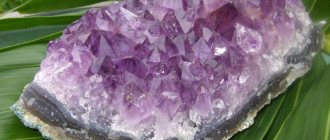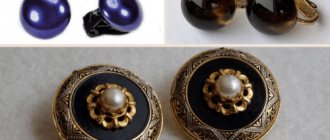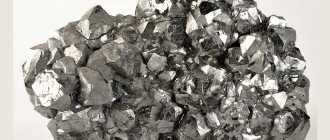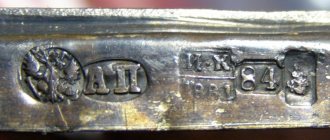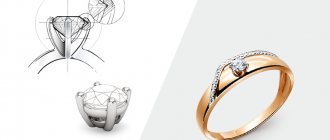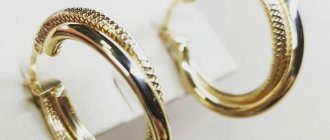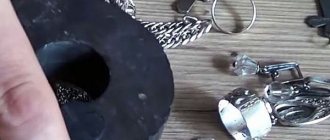Greetings, friends! The legendary phrase from the movie “Cruel Romance” “An expensive diamond is expensive and requires cutting” is the true truth. And even though it had a metaphorical meaning in the movies, today we will prove how important the cutting process is in creating the most magnificent pieces of diamond production. This is the final stage of creating and processing the stone, which determines how it will sparkle and reveal all its splendor and inner glow.
Just imagine: a black, inconspicuous piece of carbon is transformed into a delightful faceted diamond during processing. One can only guess how much work goes into this, what efforts the master makes. The cutting of a diamond is designed to sharpen the mineral so much that its inner fire and magic become visible, enchant and give the owner all its attractiveness. At the same time, it is important not to use up more of the original material than necessary and to maintain its mass to the maximum.
History of the discovery of diamond
Rough diamonds.
Photo: annamoltkehuitfeldt.wordpress.com The exact time of the discovery of the diamond has not yet been established. The thing is that the appearance of unprocessed minerals is quite trivial and does not attract much attention. The first mentions of Indian stones date back to the 3rd millennium BC, but they began to be used in jewelry only about 500 years ago, after craftsmen mastered diamond cutting methods. Advertising - Continued below
In Russia, Catherine II had a special love for them; during her reign, the concept of a diamond came into use as a synonym for wealth and luxury.
The name of the mineral in different languages has a similar sound and meaning. The Arabs called it “almas”, that is, “the hardest”, the Greeks called it “adamas”, which means “indestructible”. The Russian word “diamond” was introduced into circulation in the middle of the 15th century by the traveler Afanasy Nikitin in the book “Walking across Three Seas.”
Polycrystalline formations
Polycrystalline varieties of diamond include bead, carbonado and ballas.
The word "board"
probably comes from Old French bord or bort (defective).
Board ( photo 8
) is a cryptocrystalline form in which diamond crystals are arranged randomly, without a specific orientation. This term is also used to refer to crystals and their fragments that are not used in jewelry. Such crystals are crushed and used for technical purposes.
"Carbonado" —
A Portuguese word meaning "carbonaceous", it was used to refer to the dense, grained varieties of diamond found in Brazil.
Currently, the name carbonado or black diamond is used to designate cryptocrystalline varieties of diamond ( photo 9
), which are a heterogeneous mass of even smaller crystals (no more than 20 microns). Carbonado has the appearance of irregular pieces or fragments, with an enamel-like surface or slag-like and porous, usually with more or less rounded edges and corners. The color is usually dark with varying shades, more intense on the outside. Carbonado is opaque or only translucent.
In cryptocrystalline forms, individual crystals are unable to split in certain directions. For this reason, such masses have the exceptional hardness of diamond, but do not split under the influence of a strong blow, which determines their widespread use for technical purposes.
Ballas —
spherulites (
photo 10
)
,
usually have the shape of regular balls, although drop-shaped and pear-shaped forms are sometimes found. They have a radial structure, clearly visible on chips. They are characterized by a special surface sculpture that allows them to be easily distinguished from single round diamond crystals. The color is usually grayish, completely black or colorless. The dark color is due to the presence of graph inclusions, which are concentrated in the upper part of the spherulite.
Photo 8. — Board
Photo 9. - carbonado
Photo 10 - ballas
ALL STONES - CATALOG | DIAMONDS (DIAMONDS) - CATALOG
How are diamonds valued? | Chemical composition of diamond | Diamond crystal structure | Physical properties of diamonds | What color is the diamond? | The largest diamonds in the world | Golden Anniversary - Huge Diamond #1 | The largest diamond in the world Cullinan and diamonds from it
Share this article with your friends
Works by designers from the JEWELIRUM catalog
- Co.Cos Jewelry
- Co.Cos Jewelry
- Taiga Jewelry, Tomsk
- Taiga Jewelry, Tomsk
- Ilya Maksimov, Crimea
- Ilya Maksimov, Crimea
- UBIRING
- UBIRING
- Diamonds are Forever
- Diamonds are Forever
- Rings in natural style, Sergacheva Jewelery
- Earrings with pearls, Sergacheva Jewelery
- Cabochon ring, Minty Sky
- Fly earrings, Minty Sky
- Ring, Precious Park
- Ring, Precious Park
- Snake skin ring, Stoyanova Jewelery
- Chain earrings, Stoyanova Jewelery
- Children's pendant - stick, Matthew&Daniel
- Pendant for a child, Matthew&Daniel
- Bracelet, Svetlana Subbotina
- Ring with Slavic symbols, Svetlana Subbotina
- Indian style ring, Anna Goffman
- Indian style ring, Anna Goffman
- Earrings, ISTA
- Geometric ring, ISTA
- Earrings with enamel, PNJewelry
- Ring with enamel, PNJewelry
- Ring, Khramtsova Jewelry
- Ring, Khramtsova Jewelry
- Wedding rings to order, obruchalki.com
- Wedding rings to order, obruchalki.com
- Earrings, Yuri Bylkov
- Earrings, Yuri Bylkov
- Titanium bracelets, LanaMuransky
- Titanium pendant, LanaMuransky
- Brooch Elephant (after Salvador Dali), THING
- Ring Veil, THING
- Mace earrings, VLADIMIR MARKIN
- Cufflinks, jewelry mechanics, VLADIMIR MARKIN
- Drop-shaped ring, EKATERINA TOLSTAYA
- Drop-shaped earrings, EKATERINA TOLSTAYA
- Necklace with amber, LETA
- Earrings with amber, LETA
- Children's earrings, combinable, FASHBY
- Children's earrings, combinable, FASHBY
- Ring of architectural form, Elizaveta Malafeevskaya MANU_L
- Architectural bracelet, Elizaveta Malafeevskaya MANU_L
- Set Ginkgo Leaf, SHABUT JEWELLERY
- Brooch Wearable porcelain, SHABUT JEWELLERY
- Architectural ring, GEOMETRY
- Brooch, porcelain, GEOMETRY
- Necklace made of polymer clay, LICORNE ART
- Brooch made of polymer clay, LICORNE ART
- Ring, avant-garde, VALERY SEREDIN
- Bracelet, avant-garde. VALERY SEREDIN
- Wooden set, Scandinavian/Japanese minimalism, VLADIMIR SHESTAKOV
- Ring, Scandinavian/Japanese minimalism, VLADIMIR SHESTAKOV
- Earrings, TON ANT
- Ring, TON ANT
- Architectural ring, ANCHOR
- Architectural necklace, ANCHOR
- Earrings, GOHFELD JEWELLERY
- Necklace, GOHFELD JEWELLERY
- Massive ring, YAKISCHIK
- Designer jewelry, YAKISCHIK
- Architectural ring, ONE DAY ART
- Architectural ring, ONE DAY ART
- Brooch, bionics, VALERIYA MARKOVA (TESSA)
- Unclosed ring, bionics, VALERIYA MARKOVA (TESSA)
- Ring, bionics, BEAVERS
- Earrings, bionics, BEAVERS
- Earrings, asymmetry, VAGANOVA JEWELRY
- Airplane ring, VAGANOVA JEWELRY
- Flower ring, ALCHEMIA JEWELLERY
- Set, ALCHEMIA JEWELLERY
- Pendant-cat, ethnic, STUDIO OF ILYA AND VERA PALKIN
- Earrings, STUDIO OF ILYA AND VERA PALKIN
Comments
- Anonymous
Are there any diamond crystals in the bischofite, otherwise it looks like a slurry-like mass?
4 years ago Reply
- Anonymous
Are there any diamond crystals in bischofite, otherwise it looks like a glassy liquid
4 years ago Reply
Physicochemical properties of diamond
Yakut rough diamonds
Diamonds are transparent, colorless minerals, less often they have pink and yellow shades, they have a bright shine and high refractive indexes.
Advertising - Continued below
The mineral consists of carbon atoms equidistant from each other at a distance of 0.15 nanometers. The atoms form a cubic crystal lattice, giving diamond the highest hardness on the Mohs scale—10. However, due to perfect cleavage, crystals are very fragile, and the erroneous identification of the concepts of hardness and fragility often led to the destruction of valuable stones.
This is how the collection of diamonds of the French Duke Charles the Bold, who waged an internecine war with the king, was destroyed. The mercenaries of Louis XI, wanting to test the authenticity of the stones with a hammer, turned them into powder.
Modes of processing and enrichment of ores and sands
Disintegration of sands and ores of bedrock deposits
In the sands of placer deposits, the constituent components are in a free state. Therefore, when processing, they are usually limited to simple methods of disintegration - in scrubbers, butars, and less often in pebble mills.
The disintegration of sands is combined with the operation of classification by size (before enrichment on jigging machines, on fat tables, etc.) with the simultaneous separation of unproductive (waste) classes from the enriched material - large pebbles and sludge. For this purpose, vibrating, drum and grate screens are used.
Bedrock disintegration is a more complex process because the diamond crystals are firmly bound to the gangue. There are two known methods of disintegration of bedrock: weathering and mechanical crushing. Depending on the strength of the rocks, the duration of the weathering process ranges from several weeks to one and a half years. Weathering for disintegration purposes has been widely used in the processing of South African kimberlite ores, especially for the upper pipe ores. After a certain time, the ore breaks down and turns into a loose mixture. Disintegration of bedrock by weathering guarantees the integrity of diamonds and ensures that diamonds are fairly completely freed from bonding with other minerals. The weathering method is the most effective, but it is low-productive and is not used in large-capacity enterprises.
Crushing carries the risk of cracking the diamonds and causing them to become smaller. In order not to damage diamonds, a high degree of crushing is not allowed and it ranges from 2 to 5. The need for complete preservation of diamond crystals forces crushing to be carried out in several stages with the inclusion of enrichment operations after each of them, due to which part of the material is excluded from further processing. As a rule, crushing is three-stage. Cone crushers are usually used for coarse and medium crushing. Fine crushing is carried out in cone and roller crushers. When crushing on rollers, the degree of crushing is assumed to be minimal - no more than 1.5-2.
When crushed, kimberlite rock splits along the cleavage planes of individual components, as a result of which diamonds are easily chipped out of it. But the surface of diamonds after crushing is not always clean. Grinding in drum mills is used both for the disintegration of the original ore and for the processing of concentrates. In both cases, the grinding mode must ensure that the integrity of the diamonds is maintained. Due to the fragility of diamonds, conventional grinding is not used.
Diamond, being the hardest of all minerals, resists abrasion well, while gangue and associated minerals are a softer material that is easily abraded. This difference in mineral properties is used for selective grinding in abrasive mode. This mode is achieved by reducing the mill speed to 30-50% of the critical value and grinding into a denser pulp. Small metal balls, pebbles and pieces of the harder components of the ore itself are used as grinding bodies.
The use of selective grinding of the source material with subsequent washing of the resulting sludge provides, in addition to preserving the material and cleaning the diamond surface from films of mineral salts, additional opening of small diamonds and more favorable conditions for enrichment in heavy suspensions.
For the selective disintegration of diamond-containing ores in Russia, the following have been proposed:
- installation using sequentially installed jet mills with counter-current arrangement of ejectors as grinding devices. The unloading device of each previous shredder is integrated as a feeding device into the subsequent shredder. The working surfaces of the devices included in the installation are lined with elastic material - rubber or plastic;
- centrifugal mill. The mill consists of a vertically located cylinder with a rotor inserted into it, in the cells of which grinding bodies in the form of steel rollers are installed, which destroy the rock under the action of centrifugal forces developed when the rotor rotates. The working surface of the cylinder is lined with rubber.
Gravitational processes
Of the gravitational processes, jigging and enrichment in heavy environments are used to extract diamonds. Screw separators, vibrating sluices and concentration tables could be used to extract small diamonds. However, for effective beneficiation by these methods, the difference in the density of diamonds and waste rock is not large enough.
Before depositing, the enriched material is classified according to a narrow scale. The grading scale factor usually does not exceed 2, which is due to the very small difference in density between diamond and gangue minerals. During jigging, all minerals with a density of more than 3000 kg/m3 are released into the concentrate.
The diameter of the sieve holes in the chambers of jiggers has a significant impact on the jigging performance; it should be only slightly larger than the upper limit of the size of the enriched material. So, for classes -16 + 8, -8 + 4, -4 + 2 and -2 + 0.5 mm, the diameter of the sieve holes should be 20, 10-12, 6-8 and 3-4 mm, respectively. As the hole diameter increases, the concentrate usually becomes leaner.
Currently, many factories have used the process of enrichment in heavy suspensions. Due to its simplicity, high efficiency and economy, this process has in many cases replaced depositing and concentration in bowls. When enriching in heavy suspensions, all minerals with a density greater than 3000 kg/m3 are usually separated into the heavy fraction.
Conventional separation under static conditions is used up to a particle size of 1.5-2 mm. Enrichment of heavier suspensions of finer material is carried out in hydrocyclones. Ground or granulated ferrosilicon with a density of 6700-7200 kg/m3 is used as a weighting agent. The grinding size of ferrosilicon for static separation conditions should be approximately 80% -80 microns. The viscosity of the suspension should not exceed 20 mPa-s for separation under static conditions and 30 mPa-s for separation in a hydrocyclone. The addition of up to 1% bentonite clay to a ferrosilicon suspension increases its stability by 3-4 times without a significant increase in viscosity.
Enrichment in heavy suspensions can be carried out in separators of various designs, of which the most common are cone and drum separators. The yield of the heavy fraction usually ranges from fractions to several percent of the feed. When enriching fine material (less than 1.5-2 mm) in hydrocyclones, to obtain a separation density of 3200 kg/m3, a suspension density in the range of 2150-2200 kg/m3 is sufficient. Hydrocyclones are also successfully used to enrich sands extracted from the seabed. Unlike other devices, the process in hydrocyclones is not affected by the movement and pitching of the vessel, since the centrifugal forces acting in hydrocyclones significantly exceed the forces of gravity.
The beneficiation process in heavy suspensions, due to the low specific water consumption, has an advantage when extracting diamonds from ores and placers in areas where it is difficult to supply enrichment factories with water.
Fat process
When pulp containing diamonds enters the fatty surface, particles of hydrophilic minerals (quartz, calcite, etc.) do not stick to it and are carried away by the flow of water, while hydrophobic diamonds, upon contact with the fatty surface, firmly adhere and are retained on it.
To increase the hydrophobicity of diamonds, it is recommended to use heteropolar and apolar types of collecting reagents.
Diamonds, which are called refractory, are found mainly in alluvial deposits. They do not stick to fat because their surface is covered with a thin film of hydrophilic iron oxide, calcium oxide hydrates and silicate compounds. Removing such compounds from the surface of diamonds (by dissolving, rubbing, etc.) or treating them with reagents increases their extraction. The most suitable reagent for this purpose is tall oil. For example, the most accessible reagent for South African conditions turned out to be whale blubber containing from 40 to 80% free fatty acid.
The material from the feeder moves perpendicular to the direction of movement of the belt. The diamonds stick to the fat and are carried by the belt to the scraper, and the tailings are washed off with water and disposed of in a dump.
Continuous removal of diamonds and restoration of the fat layer is carried out with a scraper, under which there is a metal box with a removable mesh inserted into it. The cut thin layer of fat with diamonds is fed into a receiver, under which an electric heating pad is installed to melt the fat removed from the tape. Freed from fat, diamonds and particles of accompanying minerals remain in the mesh, which is replaced by another as the mineral accumulates in it.
Rice. 8.1. Scheme for finishing the concentrate using the fat process, electrical separation and manual sorting
Electrical diamond separation
Electrical separation is used to recover diamonds from coarse concentrates obtained by gravity processes or on sticky surfaces. It is based on the use of small differences in the electrical conductivity of diamonds and related minerals. Diamond is a poor conductor, while most rock minerals are relatively good conductors.
For diamond enrichment, separation in the field of a corona discharge on drum separators operating at a voltage of 20-25 kV has become widespread. Due to the fact that complete separation of particles does not occur during a single passage, the separation process produces intermediate products that need to be cleaned. Therefore, in some cases, two-, three-, or multi-stage separators are used, while in others, the material is passed repeatedly through a single-stage separator.
To increase the efficiency of the process, the following is used before electroseparation:
- regulation of material moisture. The optimal humidity, at which the difference in the electrical conductivity of the separated minerals reaches its maximum values, has rather narrow limits. The heating temperature depends on the properties of the enriched material;
- processing of the material before electrical separation with various reagents. Thus, when processing jigging concentrate from the Bakwanga placer deposit (Congo, Kinshas) with a particle size of 6.68–2.84 mm, the best separation of diamonds and waste rock is achieved when using solutions containing 0.5% NaCl;
- pre-processing of the material in a mill operating in an abrasive mode, which improves the electrical separation process.
Photometric diamond separation
Photometric separation uses the high reflectivity and scattering ability of diamonds, which sharply distinguishes them from associated minerals. During separation, a beam of light, or a laser beam, is directed at the diamond-containing material, which, when reflected, hits a photocell, which is part of an electrical circuit. A current is excited in the circuit and an automatic device is activated, allowing the diamonds with a certain amount of gangue grains to be separated from the material that does not contain diamonds.
The photometric separation method can be used as a stand-alone extraction process in cases where the dark diamond content is low.
X-ray luminescent diamond separation (RLS)
The color and intensity of X-ray luminescence varies from diamond to diamond. Color varies from blue and yellow to pink. As the size of diamond crystals increases, the intensity of the glow increases, but there are diamonds that do not obey this pattern. Black, opaque diamonds (ballas, carbonado), consisting of small, randomly oriented crystals, do not luminesce.
Along with diamonds, some accompanying minerals (zircon, scheelite, varieties of calcite, etc.) also luminesce. In the case of a large number of other luminescent minerals, this method of extracting diamonds becomes unsuitable.
Diamond flotation
To extract small diamonds, flotation is currently being used: foam separation and conventional foam flotation. The flotation process is based on the fact that pure diamonds are hydrophobic and float well at sizes up to 1.65 mm. Sometimes sodium chloride and liquid glass are used to increase the activity of diamonds and suppress gangue minerals.
In the Republic of Ghana, the process of film flotation of diamonds with a particle size of up to 1 mm is used on an industrial scale.
Diamond formation and deposits
“Mir” kimberlite pipe 525 meters deep
It’s hard to believe, but diamond and graphite are practically twin brothers. Both are pure carbon. In order for graphite to crystallize, special conditions are required: a pressure of 45,000−60,000 atmospheres and a temperature of 900−1300 °C, which are provided at a depth of 80−150 km underground. Together with volcanic magma, stones are ejected from the bowels of the earth, forming primary deposits - kimberlite pipes.
Advertising - Continued below
Scientists also know minerals of meteorite origin, formed during the collision of a cosmic body with the surface of the Earth. The temperature at the moment of impact reaches 3000 °C, and the pressure reaches 100 GPa; under these conditions, diamond-bearing impact rock is formed. “Unearthly” stones were discovered in the Grand Canyon in the USA in fragments of a meteorite that fell about 30 thousand years ago. Yakutia also has its own similar deposit - the Popigai astrobleme, formed 35 million years ago.
The development of impactites is unprofitable due to the small size of the crystals, so industrial mining is carried out using traditional methods in “terrestrial” deposits, which are found on almost all continents, and the largest are located in South America (Brazil), Russia (Yakutia), Africa (Botswana, Angola).
Allotropic modifications
Diamond is a huge carbon molecule. In addition to diamond, other substances are made of carbon, such as:
- graphite;
- lonsdaleite;
- soot, coal;
- carbon nanotubes;
- fullerenes.
But all these materials have different appearance and different properties. All this is explained by the existence of allotropic modifications. This means that carbon atoms are arranged in space and bond with each other in different ways. The configuration of atoms along with their bonds is called a crystal lattice. It is different for all substances, but for diamond it deserves special attention.
We need to start with the fact that in diamond, carbon atoms are connected to each other by covalent sigma bonds. This is the strongest type of chemical bond. In addition to it, there are also ionic, metallic, disulfide and hydrogen bonds. They are much weaker than covalent bonds and are not present in the diamond structure.
The unit cell of a diamond, that is, the unit of structure, has the shape of a cube. Scientifically, this is called cubic syngony.
The spatial arrangement of atoms and their connection is called a crystal lattice. It is its structure that determines such characteristics as the hardness of a substance. The unit cell of a diamond structure looks like a cube. That is, diamond, to use scientific terminology, crystallizes in the cubic system.
The vertices of the cube are carbon atoms. There is also one atom in the center of each face, and four more elements are in the center of the cube itself. Those carbon atoms that are located in the center of the face are common to two cells, and those located at the vertices of the cube are common to eight cells. The distances between the atoms are symmetrical, identical in length. The bonds between elements are covalent-sigma.
Since each atom is connected to at least four neighboring atoms, there are no free elements left in the diamond and the stone is an excellent dielectric.
The hardness of diamond is explained by such a dense packing of the substance. But allotropic modifications of carbon have a different spatial structure with the same composition.
Crystal lattice of diamond and graphite
For example, graphite has a configuration with weaker bonds in space, covalent pi compounds. And fullerenes are generally molecules, not carbon atoms. Their composition and substance itself were discovered relatively recently - in the 19th century.
Due to its structure, diamond is the hardest substance. This is due precisely to the structure, and not the composition of the stone.
But not only diamond has such a “packing” of atoms, although only this mineral has great hardness. All substances from group 4 have a structure similar to diamond. But since the atomic mass of these elements is greater than that of diamonds, the distance between the atoms is also greater and the bonds, accordingly, are weaker.
But not everything in nature is ideal. Even a diamond has its flaws. The stone may contain foreign elements that got into the lattice during the formation of the stone. Among them there are such substances as:
- aluminum;
- calcium;
- magnesium;
- granite;
- water;
- gases and carbon dioxide.
These substances disrupt the structure of the diamond and ideally should not be present in the composition. They are embedded in the crystal lattice and also affect the hardness of the stone and its shade. A stone with ideal characteristics is called a diamond or a pure diamond. But if such impurities exist, they can affect the number and size of stone defects or form independent inclusions.
Structural defects can be located either on the edge of the diamond or in the center. Sometimes you can get rid of them by cutting them by a professional jeweler. This procedure turns a diamond into a diamond and reveals all its advantages. Defects most often include microcracks, cloudy clouds, or inclusions of other substances.
Diamonds with a large number of defects are sent to industry, where they are used to make diamond chips. The ideal structure and composition can only be found in artificial diamonds.
The production of synthetic minerals began in the fifties of the last century. Before this, scientists knew about the composition of a diamond, but did not have the necessary equipment to synthesize the mineral. Since laboratory diamond production conditions are harsh, not only special temperatures and pressures are required, but also stone seeds and graphite are required. The procedure is expensive, so mass production does not yet exist. Diamonds have specifications and are manufactured in this way for the needs of the industry.
In nature, the mineral is mined from pipes. Sometimes not the entire stone is removed, but only its chip. The fact that there is still some diamond left in the soil can be said only after studying the structure under a microscope. The exact origin of diamond is unknown; there are several hypotheses about why carbon acquired this shape. One theory speaks of chemical reactions that occurred in the ground after sudden temperature changes and the rise of magma to the surface. The second hypothesis states that the stone fell to the ground after a massive fall of meteorites as part of celestial bodies.
Artificial diamonds
Scientific experiments on creating artificial diamonds began in 1797, but the first mineral grown in the laboratory and the method for its production were patented by the American company General Electric only in 1956. Since then, technology has advanced so far that today many artificially grown stones are completely indistinguishable from natural ones without special equipment and extensive experience, and conventional methods of recognizing a fake do not always work.
Advertising - Continued below
However, the saturation of the market with such stones is restrained by the law of supply and demand, since the fall in prices for diamonds is unprofitable for either miners of natural or artificial stones.
Known analogues of natural diamonds
It is worth mentioning the most common stones that are used in jewelry instead of diamonds. Firstly, these are well-known cubic zirconias, first synthesized at the Russian Institute of Lebedev Physical Institute. Secondly, these are moissanites, which are especially difficult to distinguish from a real gemstone without the necessary knowledge.
Rough comparison of natural diamond, moissanite and cubic zirconia
In addition, relatively recently, ASHA diamonds have appeared, the surface of which is covered with a layer of carbon atoms (of which the natural mineral is composed), which actually makes such a stone a composite material and at the same time gives it more shine and “fire” compared to the same cubic zirconias.
Advertising - Continued below
Special mention should be made of HPHT (high pressure, high temperature) diamonds. This method was developed in the 1950s and the resulting stones are actually completely natural.
The essence of the method is not difficult to understand if you remember the conditions for the formation of the stone. In nature, diamond is formed under the influence of colossal pressure and temperature over a certain period of time. Sometimes such stones reach the surface ahead of time, essentially representing a “semi-finished product.” And in order to turn it into a beautiful sparkling diamond, which will later be cut and inlaid, the stone is repeatedly exposed to high pressure and high temperature, similar to natural ones, but in the laboratory. Such a diamond remains completely natural, but as if “modified” by people.
A visual comparison of a real diamond (in the center) with its analogues: 1 - cubic zirconia, 2 - moissanite, 3 - ASHA diamond, 4 - laboratory-grown diamond
Types of diamond cuts
- Round. The same legendary one that Tolkowsky invented is still the most popular and universal. However, it also has a minus: a lot of material goes into consumption, or rather, into waste. After all, in order to achieve an ideal round shape, a natural diamond is sharpened and polished for a long time, removing “chips” from it.
- Princess. You can recognize this type of cut by its square shape with sharp corners. It does not have the same elegance as the previous one, but the loss of mass when polishing it is minimal. In the jewelry world, this type is rated quite highly, but when purchasing, it is important to pay attention to the corners; they must be well secured and free from defects, otherwise the stone may fall out of the frame and get lost.
- Pear. This cut is so delicate that it will emphasize the fragility of its young owners, and will give freshness and attractiveness to mature ladies. This look looks especially good in earrings and pendants, and enclosed in a ring it will visually lengthen your fingers.
- Marquise. Few people know, but according to legend, this type was invented by King Louis the 14th for his Marquise de Pompadour. Or rather, the diamond was processed according to his order. He wanted the stone to certainly repeat the smile of his sweetheart and not fail. The elongated shape of the “boat” turned out to be so sophisticated that it looks divine on any woman’s hand, giving it aristocracy, and giving the owner of the jewelry charm.
- Oval. The name alone makes it clear what shape this diamond is. It fits perfectly not only into rings, but also into pendants and earrings. If you are lucky enough to have a whole set with oval diamonds, you will become twice as charming, because oval earrings will make your face more expressive, and the pendant will unobtrusively create an accent on a beautiful neckline.
- Heart. A rather young type of cut, adored by romantics and connoisseurs of unusual, exclusive diamonds. Usually these pebbles are the same in length and width, and the technology for processing them is very multi-stage and complex. “Heart” diamonds are therefore more expensive than others, but this beauty is priceless in its magnificence.
- Emerald. Octagonal cut diamond, rectangular in shape. There is an opinion that the light with this cut is not refracted in such a variety of ways, but the flashes and highlights are brighter. This species is not as common as the others, but undoubtedly deserves attention and admiration.
- Asher. It has more “steps” than emerald and is square in shape. Due to the multi-tiered structure, the effect of glare and play of light is achieved incredible. This is why this cut is valued and loved.
Surely, in a couple of years many more new varieties will be invented, because the popularity of diamonds is growing. People want not just luxury, but smart investments in their future, and precious stones are perfect for this.
Well, we are waiting for new exquisite specimens, which we will certainly tell you about right away and show you in the photo. If anything is worth attention, it’s the real creations of nature, carefully transformed by human hands into eternal works of art! See you again, jewelry lovers!
Team LyubiKamni
Magical and healing properties of diamond
Lithotherapists believe that diamond accelerates the renewal of body cells, promotes cleansing, and fights infections and parasites. In many teachings it is used as a rejuvenating agent.
Advertising - Continued below
Yogis use diamond to treat mental illness, heart, kidneys, and cleanse the liver. Warriors wore diamond rings, believing that it would give them fortitude and make them invincible. In addition, the stone brings happiness to the owner and protects against bad habits and actions.
So let's start making a diamond out of paper:
Take a square of white paper, we will need two of these.
You need to make a triangle out of a square; to do this, we connect two corners and bend the paper diagonally.
Now unfold the paper again into a square and bend the triangle but with different corners.
If you unfold the sheet again into a square, then this is what you get, two diagonals that create a cross.
Now bend the leaf in half.
Again you need to unfold and fold the sheet in half in the other direction.
Let's turn it around again and see what happens. Lots of cross lines.
Now we bend those lines that go to the corners in one direction, and bend the lines between the corners in the other.
We bend the lines that we have outlined to the end and connect the two corners to make a square.
Now the fun really begins. We place the square so that the edges where the solid edges look down, and not the solid ones up.
We bend the right edge towards the center so that its edge is parallel to the center line.
In the same way, the left edge needs to be folded.
We turn over the created paper figure and, by analogy, turn in the right edge.
Then we turn up the left corner and we have an original paper rhombus. We cut off the top of the diamond with scissors, right along the short side of the folded corners.
Now it’s a very difficult moment, you need to bend one corner out of the four previously bent and bend it in the middle, then turn it. It is, of course, incredibly difficult to explain these steps in detail, so look at the photo to see how this is done.
We will do the same with all the corners that remain, we get such an original figure.
Now we place the triangle with the base down and the tip up. On the right, as we have already done, we bend the corner parallel to the center line.
Let's turn the left corner in the same way.
Now we raise the upper sides that were bent a little and, by analogy, we bend the following corners.
First the right, then the left corner.
We do the rest in exactly the same way.
We unfold everything that we have bent, but do not smooth out the bent edges at all.
We bend the outermost corners inward.
As I already said, two similar parts need to be made and they should be the same.
Take glue and lightly spread those corners that were bent in the last step.
That's all. Our handmade paper diamond is ready. You can make a garland out of them or just hang them one by one on a string.
Make a tulip, claws or shuriken out of paper with your own hands; these are also interesting and original crafts. Moreover, you won’t spend too much material and will increase your skill in one of the most popular types of crafts.
Who will benefit from diamonds and diamonds?
Graff yellow diamond necklace with 132 carat Golden Empress center diamond
Ring Tiffany & Co. with colorless diamonds and a blue diamond in the center
Diamond, like diamond, is the stone of the brave and determined. It requires a respectful attitude and may be useless in the hands of a weak, insecure person.
Diamonds formed by intergrown crystals
Diamonds are quite often found in the form of doubles ( photo 6
). Twins are two crystals fused along one plane - intergrowth twins, or two diamonds grown into each other - intergrowth twins. Twins can be formed by flat-edged and curved crystals and their combinations.
Flattening is a characteristic feature of diamond twins, since highly flattened intergrowths are most common. Twins often form a triangular or rhombic shape ( photo 7
).
Star-shaped twins of diamond are also formed. As a result of the cyclic twinning of five crystals, a five-ray intergrowth appears. When two flattened twins grow, intergrowths of a six-ray shape are formed. Parallel accretion of diamond crystals is observed along all three axes ( Fig. 4.
)
Photo 6 - doubles:
Photo 7 - triangular or rhombic shape:
Rice. 4 - parallel fusion of crystals:
The influence of color and clarity on the choice of cut.
When choosing a cut, color and clarity become more important the lower the grade.
This is because the closer a diamond's proportions are to its ideal dimensions, the more shine it will have, and this shine will help hide inclusions and color imperfections in the stone.
Therefore, if you decide to purchase a diamond of a lower grade in color or clarity, do not reduce the cut standards either.
High quality processing compensates for poor color and clarity.
The quality of the cut and the size of the diamond.
One of the most frequently asked questions by buyers is whether they should choose a large diamond with a lower cut grade, or should they sacrifice size for a high quality cut.
First, if you choose a stone with a cut graded at least fair or poor, you're fine.
Don't forget that larger diamonds are much more noticeable, and if there are any yellow tints or significant inclusions, they will be more visible.
As mentioned, a lower cut grade means less brilliance to mask these imperfections.
If you are purchasing a diamond of low clarity or color and are concerned about the appearance of imperfections in your stone, choose a smaller diamond with a better cut.
